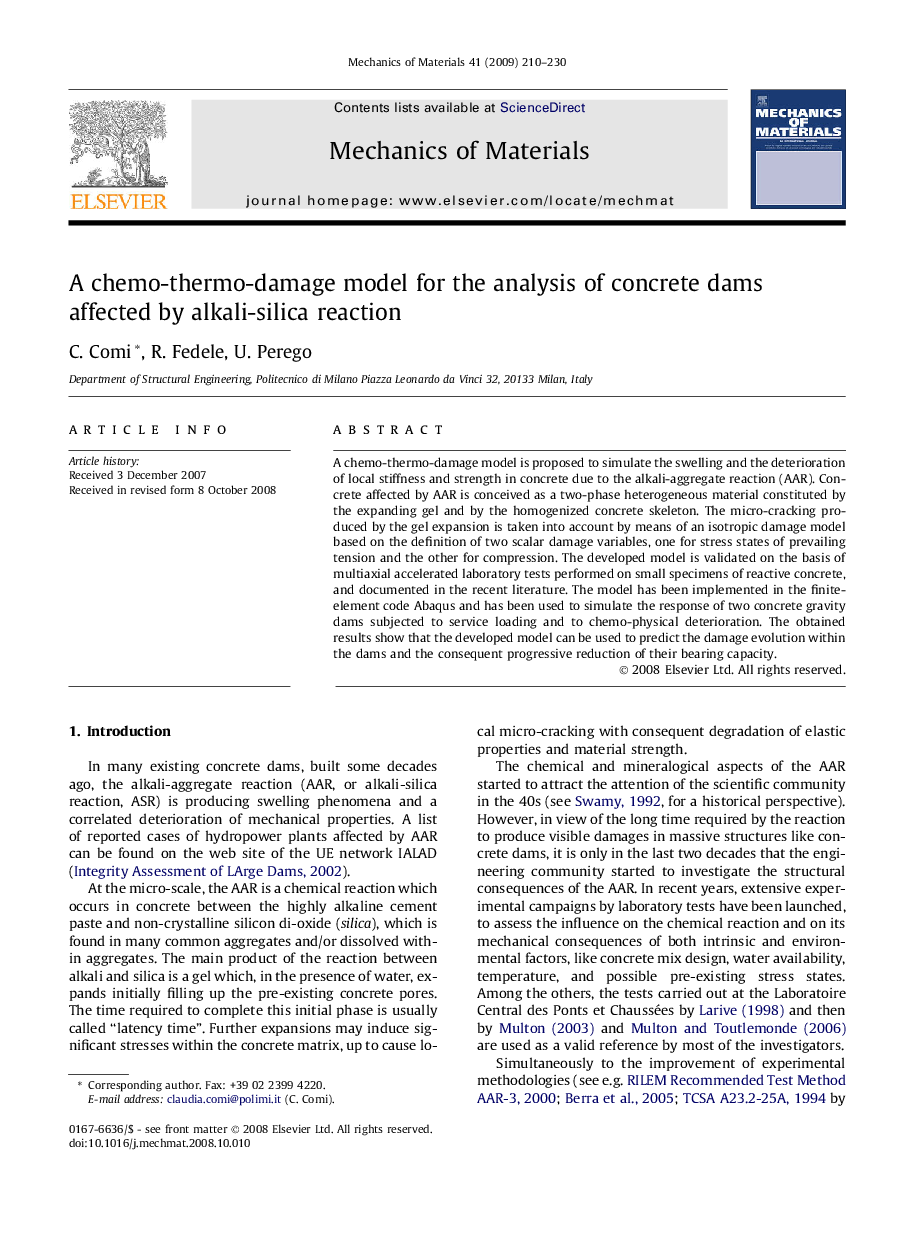| Article ID | Journal | Published Year | Pages | File Type |
|---|---|---|---|---|
| 800227 | Mechanics of Materials | 2009 | 21 Pages |
A chemo-thermo-damage model is proposed to simulate the swelling and the deterioration of local stiffness and strength in concrete due to the alkali-aggregate reaction (AAR). Concrete affected by AAR is conceived as a two-phase heterogeneous material constituted by the expanding gel and by the homogenized concrete skeleton. The micro-cracking produced by the gel expansion is taken into account by means of an isotropic damage model based on the definition of two scalar damage variables, one for stress states of prevailing tension and the other for compression. The developed model is validated on the basis of multiaxial accelerated laboratory tests performed on small specimens of reactive concrete, and documented in the recent literature. The model has been implemented in the finite-element code Abaqus and has been used to simulate the response of two concrete gravity dams subjected to service loading and to chemo-physical deterioration. The obtained results show that the developed model can be used to predict the damage evolution within the dams and the consequent progressive reduction of their bearing capacity.
